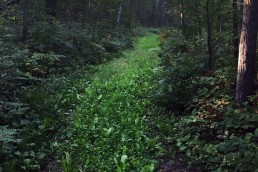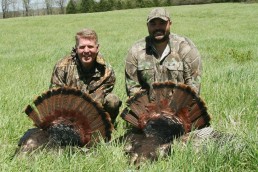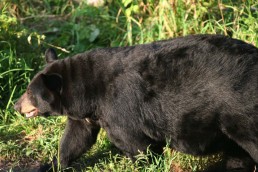Spring Food Plot Decisions: Choose Wisely
SHARE THIS POST
Since we had April weather in February, many gamekeepers started early looking ahead to their food plot program. Many were questioning what to plant and which crops and brands to use. This can be a very expensive venture if you don’t take the time to educate yourself and do things right to save you time and money.
Most low-end, low-cost food plot seeds are normally sold for a different end result, thus tending to deliver a low yield and poor quality. And, most of our premium plants here in the U.S. are carefully genetically engineered for specific end results—corn to produce ethanol or to feed livestock, alfalfa to bale or feed to bovines or soybeans to crush and feed as soybean meal to livestock or make soybean burgers. But hunters want plants that are specifically meant for attracting deer. They want a plot to provide the animals with the best nutrition possible that’s easily digested in their four-chambered stomachs so they keep coming back.
I would suggest that you choose forage-grade cultivars that are bred specifically for consumption by deer. The best plants to choose are developed after many years of research. Look for the premium performance characteristics and ones that can execute much better than most generic seeds.
It is generally best to plant a food plot that’s a blend of several types of seeds. Plots that consist of just one type of seed (mono plots) are at much higher risk for failure. They typically do not perform as well in a wide variety of soil types too, and are more susceptible to heat and drought and usually more prone to have disease and pest problems. If a mono plot experiences just one of these problems, it affects the entire plot because there’s usually only one type of plant in the field. You’re essentially “putting all your eggs in one basket” if you plant just one type of seed.
Some types of plants can be planted as a mono cultivar and others are best planted in a blend of different plants and varieties. Again, food plots consisting of several types of seeds have a lower risk of plot failure. Each type of plant in a blend has a different tolerance level for soil type, heat resistance, drought resistance and disease or pest problems, not to mention poor farming practices. Multiple seed types manage these risks better.
A little-known fact is that in New Zealand they’re about 20 years ahead of us when it comes to deer nutrition. The reason is “the almighty dollar,” and two of the top exports in New Zealand are antler and venison. In fact, they are so far ahead of us in this department that you can actually go to college in New Zealand and get a specific degree in “deer forage production.” They have huge deer ranches there where they raise red deer, elk and whitetails. These deer ranchers need forages that put on big body weights and grow “big bone” as fast as possible.
Are you enjoying this post?
You can be among the first to get the latest info on where to go, what to use and how to use it!
Most of the plants I planted years ago were meant for livestock or human consumption. Sure, whitetails will eat some, but it’s not the “ultimate” whitetail food. If there’s round steak available, you’ll eat it because that’s all there is. But if there’s fillet mignon right next to it, I’ll bet that the round steak doesn’t get touched until the filet mignon is all but gone, for most.
Whitetails have different enzymes and bacteria in their stomachs and they break things down differently. When you feed a whitetail, you’re not actually feeding their gut; you’re feeding the bacteria in their gut. Back in the 1980s, a company called BioLogic began bringing this type of knowledge and advanced science from New Zealand here to the U.S. Over the years they’ve done extensive research on their numerous test facilities here to find the absolute best in deer forage/feed. Although they’ve done more research on this than the next closest three companies combined, I suggest that you still test things for yourself. If you’re going to plant an acre of clover, test one-half an acre of one product and the other half with another. Plant them the same way at the same time so you can make an equal comparison. If you only ever plant one thing, you’ll never see the difference.
Much depends on your management goals as to what would be the best things to plant. Do you want to attract deer? Do you really want to help them recuperate from the rut or a harsh winter? Do you want them to grow bigger antlers and be healthier? With these questions in mind, you’ll then still have to consider how much acreage you can devote to your food plots. With smaller acreage you have to be more refined with your goals and be more selective.
For spring in the Upper Midwest, we plant mostly perennials (clovers, alfalfa, chicory, trefoils, etc.), corn and annual legumes (soybeans, lablab, iron clay peas, etc.) and other crops such as sunn hemp, sorghum or sunflowers. You can plant others, but some of the most attractive, nutritious selections are meant for a late-summer planting, or often referred to as a “fall planting.”
No matter what you plant, again, you want different ones that mature at different rates that will leave something palatable for the deer throughout the year. Planting both annuals and perennials is important. If you’re planting only annuals, by the time they become palatable to whitetails, you’re missing out on two of the most important antler-growing months and fawn-nurturing periods of the year.
Planting food plots is definitely one part of the total hunt I truly enjoy. I call it “part of the hunt” because ultimately I’ll use the plots to grow bigger, healthier deer, and to attract and hold them during a season. If you choose what to plant carefully, you can then grow your own big bucks and make hunting them easier.
MWO
SHARE THIS POST
Did you enjoy this post?
You can be among the first to get the latest info on where to go, what to use and how to use it!
Todd Amenrud
Todd Amenrud is a full time sportsman whose passion is bowhunting whitetails. He spends considerable time researching whitetails, and has written six books on the subject. Harvesting 47 record-book animals and his ability to share his knowledge have made him one of the Midwest’s most-recognized hunting resources.



